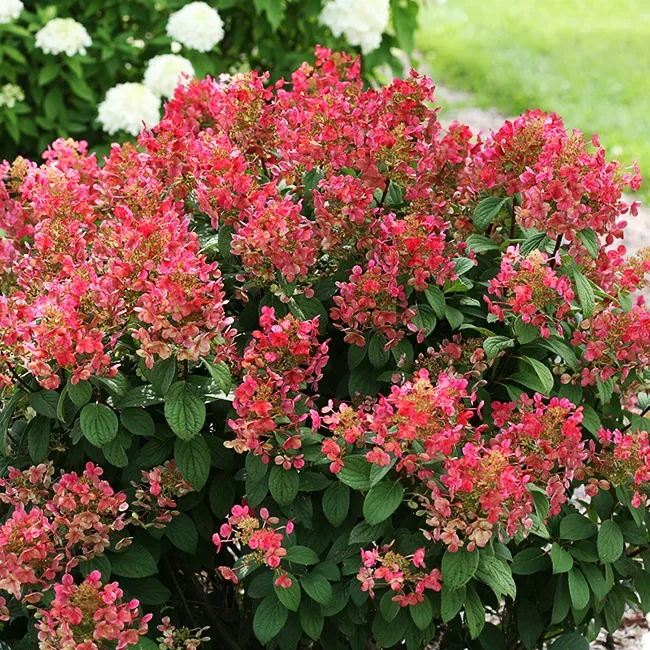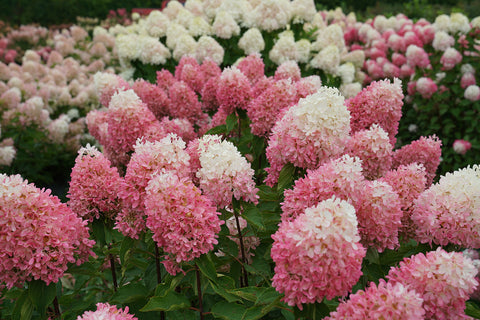Fire Hydrangeas: The Ultimate Guide To Growing And Caring For These Beautiful Blooms
Fire hydrangeas (Hydrangea paniculata) are a type of hydrangea that is known for its large, showy blooms. They are also relatively easy to grow and care for, making them a popular choice for gardeners of all skill levels.
In this blog post, we will provide an ultimate guide to growing and caring for fire hydrangeas. We will cover everything from choosing the right location to planting and pruning, as well as tips on how to encourage the best blooms.
Choosing the right location
Fire hydrangeas are relatively adaptable plants, but they do best in full sun to partial shade. They also prefer well-drained soil. If you live in an area with hot summers, you may want to plant your fire hydrangea in a spot that gets some afternoon shade.
Planting
Fire hydrangeas can be planted in the spring or fall. When planting, dig a hole that is twice as wide and as deep as the root ball of the plant. Backfill the hole with soil and water well.
Pruning
Fire hydrangeas do not need to be pruned heavily. However, you should remove any dead, diseased, or damaged branches in the spring. You can also lightly prune the plant in the fall to shape it and remove any weak or crossing branches.
Fertilizing
Fire hydrangeas do not need to be fertilized heavily. A light application of a balanced fertilizer in the spring will help to promote healthy growth and blooms.
Watering
Fire hydrangeas need regular watering, especially during the first year after planting. Once they are established, they can tolerate some drought, but they will produce better blooms if they are watered regularly.
Winter care
Fire hydrangeas are hardy in USDA zones 3-8. In colder climates, you may need to protect your plant from the cold by covering it with a burlap sack or evergreen boughs.
Encouraging the best blooms
The color of fire hydrangea blooms can be affected by the pH of the soil. In acidic soil, the blooms will be blue or pink. In alkaline soil, the blooms will be white. You can change the pH of the soil by adding sulfur to acidic soil or lime to alkaline soil.
You can also encourage the best blooms by deadheading spent blooms. This will help to promote new growth and more blooms.
With proper care, fire hydrangeas can thrive for many years in your garden. They are a beautiful and rewarding addition to any landscape.
Fire hydrangeas are a beautiful and hardy type of hydrangea that is known for its large, conical blooms that start out white and then turn a fiery red in the fall. They are relatively easy to care for and can be grown in a variety of climates. If you are looking for a striking addition to your garden, a fire hydrangea is a great option.
To learn more about fire hydrangeas, I recommend visiting the . This website has a wealth of information on fire hydrangeas, including their history, care, and different varieties. You can also find photos of fire hydrangeas in bloom, as well as tips on how to plant and care for them in your own garden.
FAQ of fire hydrangea
Here are the 5 most frequently asked questions about fire hydrangea, along with valuable insights and solutions:
- What is a fire hydrangea?
A fire hydrangea is a type of hydrangea that is known for its colorful blooms. The flowers can be white, pink, blue, or purple, and they often change color throughout the season. Fire hydrangeas are relatively easy to care for and can grow in full sun or partial shade. They are a popular choice for landscaping and can add a touch of color to any garden.
- What is the size of a fire hydrangea?
Fire hydrangeas can grow to be 8-15 feet tall and 6-12 feet wide. They are a large shrub or small tree, and they can take up a significant amount of space in your garden. If you are limited on space, you may want to consider a smaller variety of hydrangea.
- What is the best time to plant a fire hydrangea?
The best time to plant a fire hydrangea is in the spring or fall. This will give the plant time to establish its roots before the hot summer weather or the cold winter weather. When planting, make sure to amend the soil with compost or other organic matter. Fire hydrangeas prefer acidic soil, so you may need to add peat moss or sulfur to the soil if your soil is alkaline.
- How do I care for a fire hydrangea?
Fire hydrangeas are relatively easy to care for. They need regular watering, especially during the hot summer months. You should also fertilize them once a year in the spring with a balanced fertilizer. Fire hydrangeas are susceptible to powdery mildew, so you may need to spray them with a fungicide if you see any signs of the disease.
- How do I deadhead a fire hydrangea?
Deadheading is the process of removing spent blooms. This will encourage the plant to produce more flowers. To deadhead a fire hydrangea, simply pinch or cut off the spent blooms at the base of the flower cluster. You can deadhead fire hydrangeas throughout the summer, but it is important to do it before the flowers start to set seed.
Image of fire hydrangea
5 different images of "fire hydrangea" from Pinterest.com:
- A close-up of a single fire hydrangea flower. The petals are a deep red color with a fiery orange center.

- A full bush of fire hydrangeas in bloom. The flowers are a variety of colors, from deep red to light pink.

- A fire hydrangea in a garden setting. The flowers are surrounded by green leaves and other plants.

- A fire hydrangea in a vase. The flowers are arranged in a beautiful display.

- A fire hydrangea in a field. The flowers are swaying in the wind.

Post a Comment for "Fire Hydrangeas: The Ultimate Guide To Growing And Caring For These Beautiful Blooms"